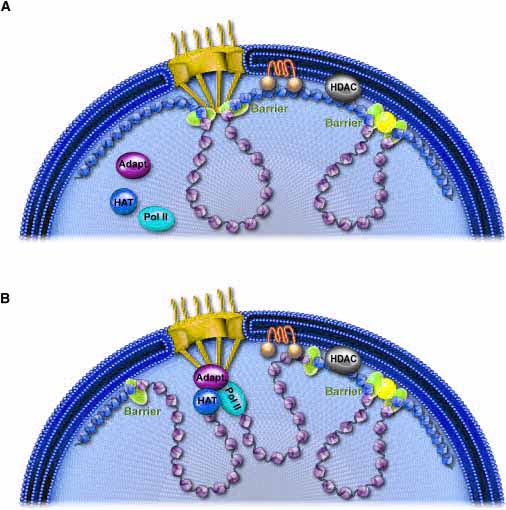Function Of Nuclear Envelope
Function Of Nuclear Envelope Assignment Help | Function Of Nuclear Envelope Homework Help
Functions of the Nuclear Envelope
The nuclear envelope is an interface between nuclear and the cytoplasm. It serves to separate the genetic component of the cell from the protein-synthesis machinery.1. Nucleo-cytoplasmic exchange.
Cellular activity is controlled by the nucleus, and more specifically by DNA located in the chromosomes. The RNA involved in protein synthesis originates in the nucleus, and is then transferred to the cytoplasm.(i) Exchange across nuclear pores. The nuclear pores are the major sites of transfer of macromolecules during most periods of cell activity. The size of macro molecules has a bearing on their ability to pass through the nuclear pores.
(ii) Active transport. Small organic molecules and ions pass through the nuclear pores by free diffusion. It is also possible that they may go across the membrane by active transport.
(iii) Blebbing. The nuclear membrane forms out pockets which are pinched off to form blebs or vesicles. This phenomenon is called blebbing.
(iv) Exchange through the endoplasmic reticulum. The perinuclear space of the nuclear envelope is continuous with the cavity of the cisternae of the endoplasmic reticulum. However, for substances to take this route they would have to pass through the inner nuclear membrane.
2. Attachment of structural elements of the cytoplasm.
The nuclear envelope provides a surface for the attachment of structural elements of the cytoplasm, e.g. myofilaments, microtubules and microfilaments. The nuclear envelope could also act as microtubule organizing centre.3. Attachment of nuclear components.
The chromosomes may show both centromeric and telomeric attachment to the nuclear envelope. The giant chromosomes of dipteran salivary glands terminate at both ends on the nuclear envelope. The attachment of chromosomes may assist condensation and separation during cell division. The Barr body is also firmly attached to the nuclear envelope. The lateral components of the synaptonemal complex, which is formed during meiosis, are attached to the inner nuclear membrane. Persistence of DNA in isolated nuclear envelope components indicates that chromatin is associated with the nuclear envelope.
4. Contribution to other cell membranes.
The nuclear envelope, along with the ER, acts as a source of membrane flow to other cell membranes. It gives off vesicles which can contribute to the endoplasmic reticulum, annulate lamellae, Golgi complex and intranuclear membranes.5. Electron transport activity.
Nuclear membranes appear to have electron transport system similar to those of the endoplasmic reticulum. The evidence for these components like however is less convincing and the possibility of mitochondrial containing cannot be excluded.6. Protein synthesis.
Protein synthesis activity similar to that of the endoplasmic reticulum has been observed in various nuclear envelopes. This is to be expected as ribosomes are found on the outer nuclear membrane. Cholinesterase activity has been detected in the nuclear envelope of nerve cells.For more help in Functions of the Nuclear Envelope please click the button below to submit your homework assignment.